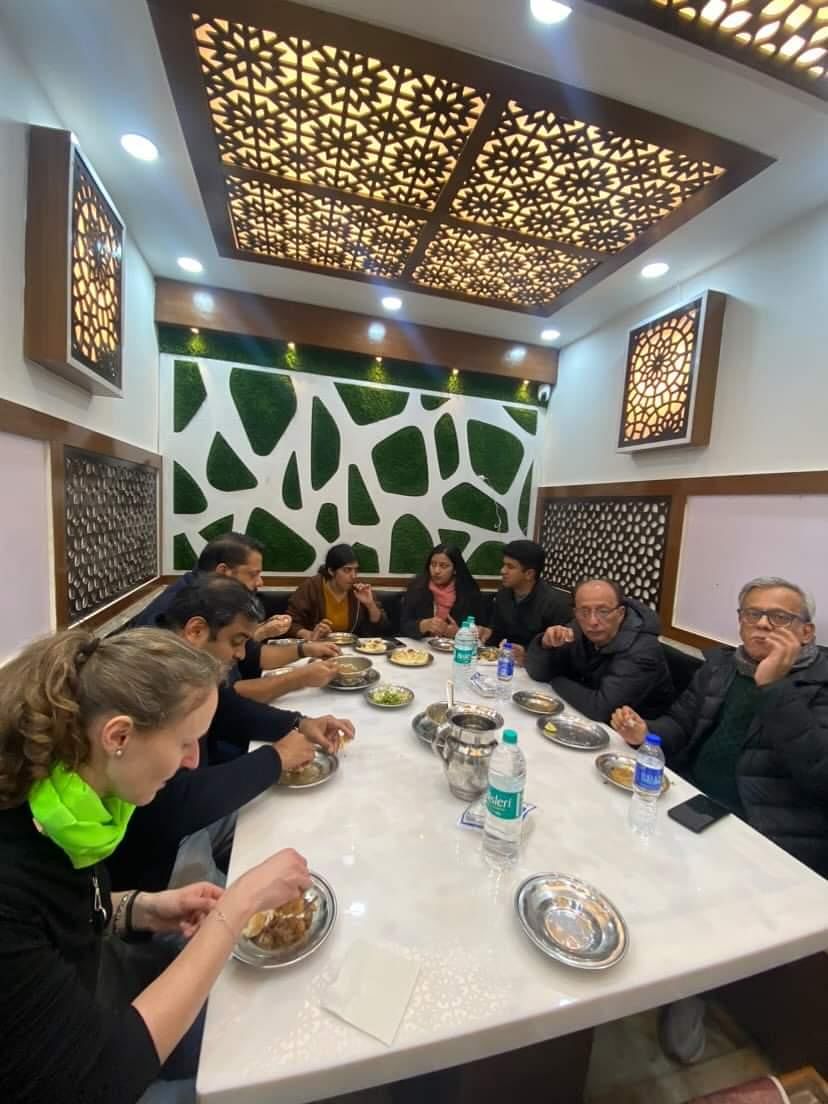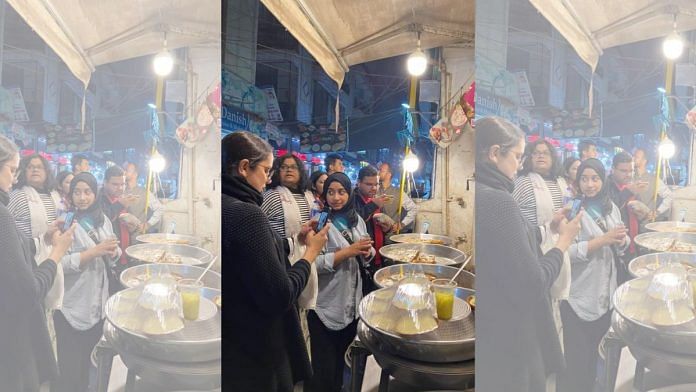The Muslim-dominated Jamia Nagar has regularly made headlines— be it 2008, when terrorists and police engaged in a gunfight at Batla House, or a decade later when Shaheen Bagh became the centre of the CAA-NRC protests in 2019. But more recently, the residential locality has emerged as a hub for food lovers. From traditional Mughlai to Lebanese and Nepali to Turkish, the cuisines on offer are a reflection of the people who call Jamia Nagar home.
Today, the congested lanes of Jamia Nagar can give traditional food haunts such as Old Delhi, Matia Mahal and Nizamuddin a run for their money. Zakir Nagar, Batla House, Shaheen Bagh, Tikona Park and Okhla Head neighbourhoods in Jamia Nagar have become popular haunts among foodies.
Recently, the Delhi chapter of INTACH Heritage organised a food walk at Batla House and Zakir Nagar. It was the first such walk to cover the ‘food of Jamia Nagar’. The ubiquitous butter chicken was on the menu, but dishes like nahari, Lucknowi galawati kebabs and keema, Hyderabadi dum biryani, tangdi kabab and anjeer halwa were some of the other highlights.
The butter chicken, tikka-grilled perfectly with a blend of spices on an open flame was buttery and creamy. The galawati kebabs with their crisp coating and tender meat melted in the mouth. All the better with a steaming hot cup of milky but heavily spiced Nagori chai—which is sweeter than other Indian teas—to wash it down.
“The development of Zakir Nagar and the surrounding area has been shaped by several waves of Muslim migration from in and around Delhi over the last four decades. These migrants brought with them their own unique cultures, traditions, and, most notably, their culinary traditions, which reflects its rich food culture today,” conservation architect Yash Gupta of Intach Heritage said, sipping Nagori tea in Zakir Nagar.

Also read: Artist tribals of Lalbazar are painting their ‘village of dreams’. It’s a new tourism destination
A melting pot on your plate
Since 1990, the area developed rapidly into an industrial, commercial, educational and residential hub. But despite the massive expansion, successive governments have failed to make comprehensive plans for its development.
Uncontrolled urban migration later resulted in the formation of unauthorised colonies here. Jamia Nagar is a congested and cramped area, but it is also a unique mix of cultures.
“This area has not been explored much. If a study is done here and basic facilities are provided in the narrow streets, then Jamia Nagar can be explored more,” Gupta added.
University students from countries such as Afghanistan, Uzbekistan and Turkey also call Jamia Nagar home, and they’ve brought their food and spirit of entrepreneurship with them.
“Here you get to eat a variety of authentic food because there has been migration from many countries due to crises or other reasons. You will also find Afghani dishes here because there is a good population of Afghans in this area. You will see the effect of the migration that has taken place within the country through the food,” said Farooq Miya, owner of a restaurant in Zakir Nagar.
Also read: ‘Kannada Kabir’ Ibrahim Sutar—Sufi bhajan singer who often cited Gita, Quran in same breath
Authentic and affordable
What makes Jamia food special as compared to other areas of Delhi is the pocket-friendly cuisine with no compromise in quality and quantity.
“Areas like Old Delhi have become so hyped. To keep up, food is cooked and served. And this has affected quality,” Saleha Siddiqui, a chef by profession, told ThePrint. Siddiqui, 26, grew up in Abul Fazal, Jamia Nagar where she runs a bakery of her own—Salzbakes.
Residents attribute the cheap food in this area to the students of Jamia.
“The great taste here at affordable prices is due to Jamia University and its students. Because the number of students studying in this area coming from other states and countries is very high, it is necessary to make food affordable for them,” said Mohammad Ashraf who has become famous for his anjeer halwa, shahi tukda, moong dal and aloe vera halwas. He’s been perfecting these recipes over the last 40 years. Ashraf’s shop is located near the mosque in Zakir Nagar. Aloe vera halwa is an unusual dessert, but it’s also a reflection of the willingness to push the boundaries of traditional cuisine.
“I was working in a five-star hotel, but I wanted to start experimenting with food. I quit my job and opened my own small shop in Zakir Nagar. Here, we started making different types of kebabs. We made a Lahori dish which we cook for 36 hours. Our experiment has been successful,” said chef Abdul Kalam, owner of Chelo Kebabry.
If food is an expression and reflection of a region or neighbourhood’s history, geography, and socio-political and economic conditions, then Jamia Nagar’s food is its heritage.
“Food is an expression of who we are, and who we are is defined by so many diverse aspects. This is what makes the food culture of Zakir Nagar/Jamia Nagar so nuanced. It’s a junction of many cultures and people,” Saleha said.
(Edited by Anurag Chaubey)



